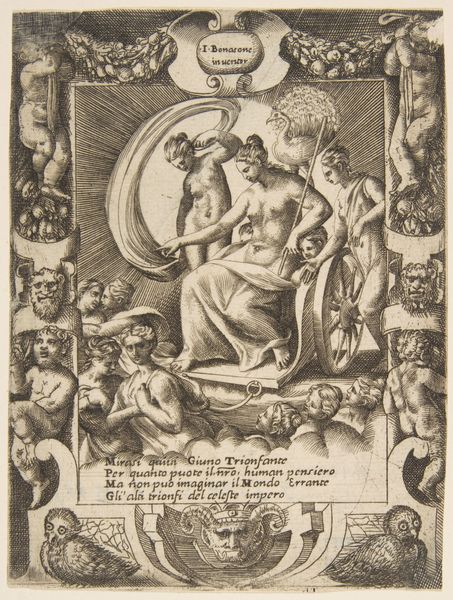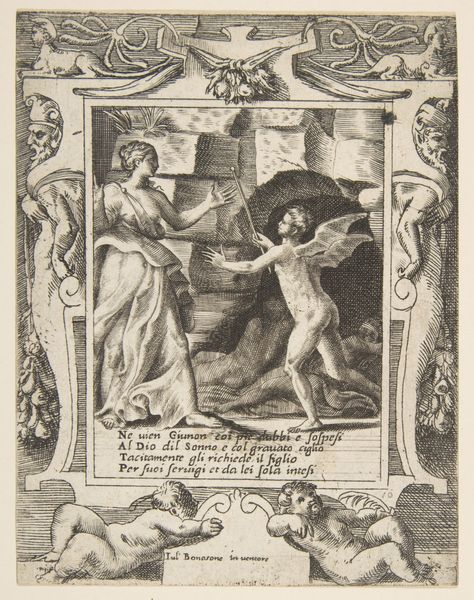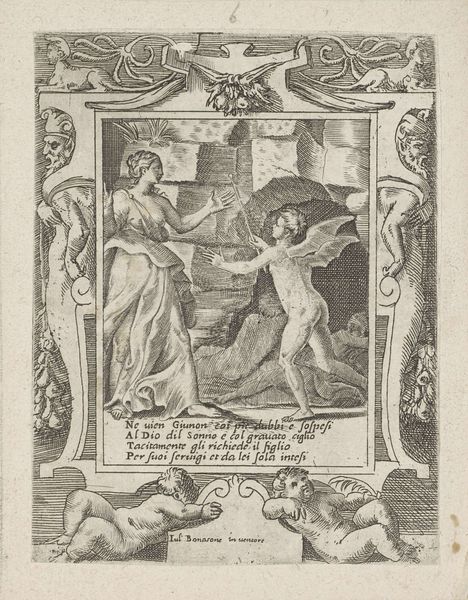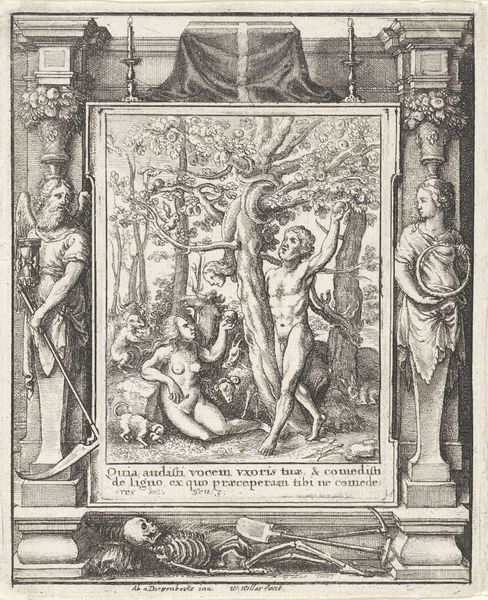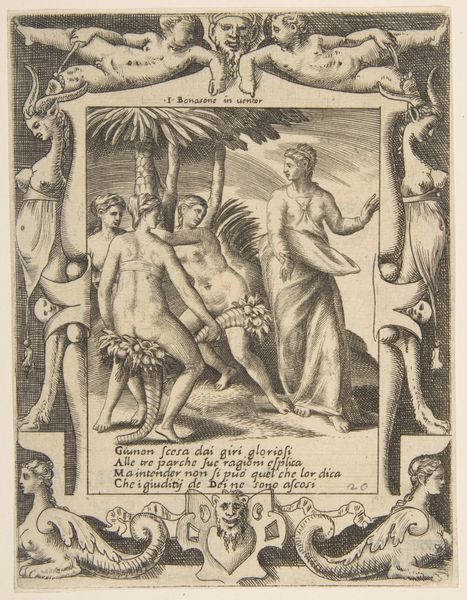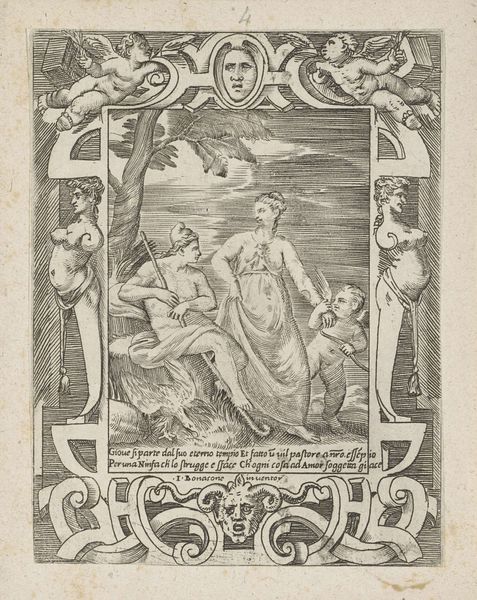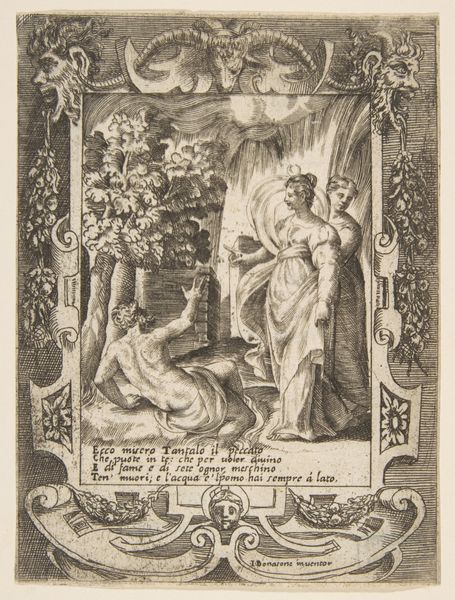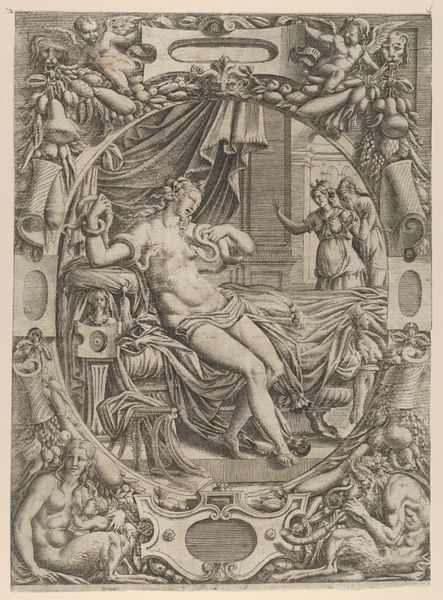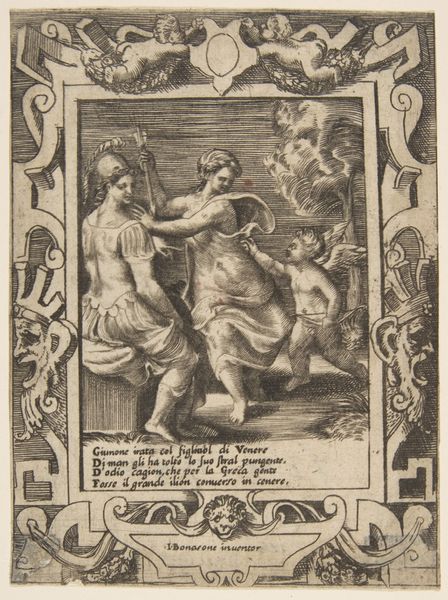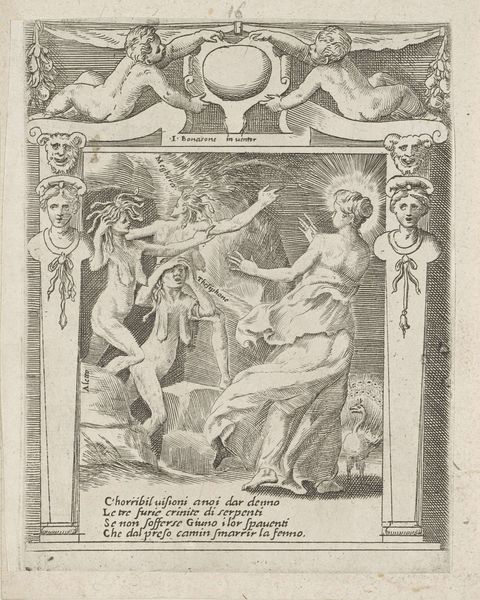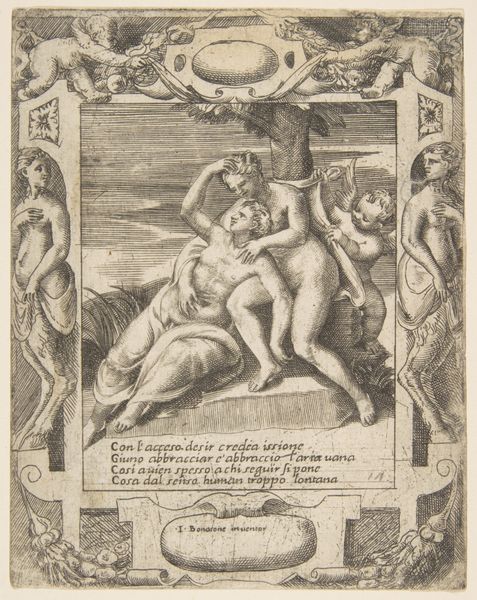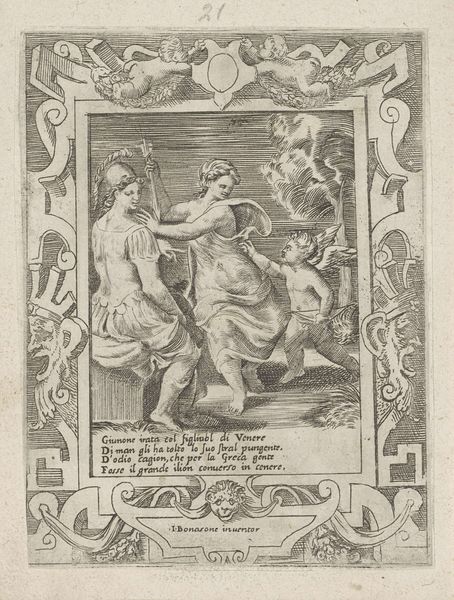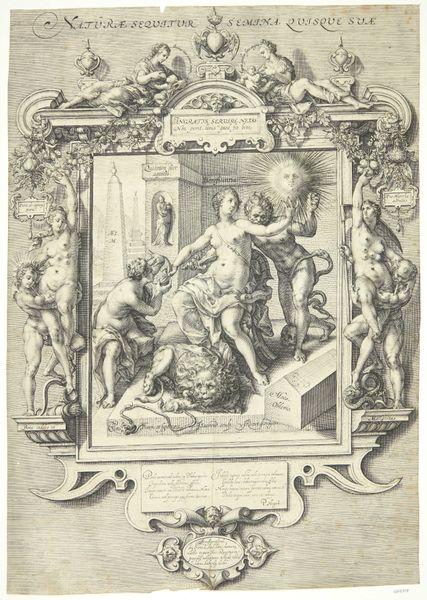
A vulture eating the innards of Titius, Cupid above two women to the left, set within and elaborate frame, from "Loves, Rages and Jealousies of Juno" 1531 - 1576
0:00
0:00
drawing, print, etching, engraving
#
drawing
#
allegory
#
pen drawing
# print
#
etching
#
bird
#
mannerism
#
figuration
#
cupid
#
nude
#
engraving
Dimensions: sheet: 5 5/16 x 3 15/16 in. (13.5 x 10 cm)
Copyright: Public Domain
Curator: Welcome. Here, we see an engraving by Giulio Bonasone, active in Italy during the Mannerist period. This piece, dating sometime between 1531 and 1576, is titled "A vulture eating the innards of Titius, Cupid above two women to the left, set within an elaborate frame, from 'Loves, Rages and Jealousies of Juno'." What’s your first impression? Editor: There's an undeniably brutal elegance to it, wouldn't you say? The linear precision is captivating, almost detached, given the violent subject matter, and the texture achieved is quite amazing considering its monochrome nature. Curator: Precisely. It’s evocative of the period's fascination with classical mythology filtered through a Mannerist lens. The engraving illustrates the torment of Titius, whose eternal punishment for attempting to rape Leto involved a vulture perpetually devouring his liver. That the Met possesses this speaks to both Bonasone's notability as well as an ongoing, morbid curiosity with Greek mythology. Editor: The composition itself is remarkable. The balance is wonderfully strange—with the vignette of Titius occupying much of the space yet framed so carefully, leading your eye around all four corners before focusing back onto the scene of agony. Note also Cupid seems to gleefully descend into this picture from top right, like some avenging angel. The symbolism seems blatant! Curator: It is! Consider also how this portrayal of male suffering, in effect, serves to legitimize, perhaps even normalise the institutional violence of the gods in preserving order, patriarchal power and divine revenge. Even with what looks like empathy shown by the women standing above Titius, we have to also remember who controls this narrative. It reinforces hierarchical social norms. The artistic skill is undeniable, but the message resonates with power structures of the time. Editor: That interpretation certainly brings an unnerving dimension. Looking again, the cold, stylized treatment amplifies the horror precisely by depersonalizing it. The symmetry within each vignette does indeed convey an unsettling sense of ordained inevitability to his pain. The way in which the image has been rendered in monochrome really heightens its dramatic intensity. It is difficult to find relief within the detail because there is very little shading—the lines give an incredible impression of something ghastly and violent. Curator: Absolutely, that's something I agree with! I hadn't noticed the lack of color so obviously! Thanks for pointing that out. I shall remember that on my next tour. Editor: My pleasure; let's keep dissecting these visual stories; you bring such a different, crucial outlook.
Comments
No comments
Be the first to comment and join the conversation on the ultimate creative platform.
